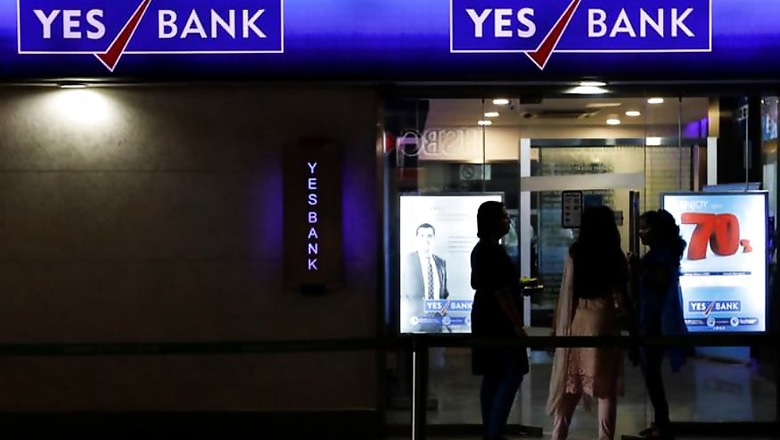
views
Mumbai: A day after the Reserve Bank imposed a moratorium on Yes Bank and superseded its board, domestic rating agency ICRA on Friday downgraded the crippled bank's bonds worth Rs 52,612 crore.
The downgraded bonds are Basel III-compliant Tier-II instruments and include Rs 10,900 crore worth hybrid bonds which has been lowered to negative.
The other instruments downgraded to negative ratings include Rs 7,030 crore worth infrastructure bonds, additional Tier-I hybrid bonds worth Rs 10,800 crore; Rs 300 crore lower Tier-II bonds and certificates of deposits worth Rs 20,000 crore.
These bonds are maturing between 2021 and 2028.
Icra said rating downgrades factor in the moratorium on the bank and the cap on payments to its depositors.
On Thursday, when it was placed under an RBI-appointed administrator, the Yes Bank defaulted on coupon payout on the Basel II Tier-I bonds due on March 5.
The coupon payment on these bonds also required prior RBI approval, in case such payment results in an increase in a net loss. But the problem is that the bank has an upcoming coupon payment on Basel II lower Tier-II bonds later this month and unless the restrictions are removed, the bank may default on this as well, it Icra said.
"Restricted payments during the moratorium period severely constrains the ability of the bank to service its liabilities in a timely manner.
"The terms of proposed reconstitution or amalgamation of the bank will remain the key determinants of the future rating actions on the above instruments," the rating agency noted.
Yes Bank, whose 62 percent loans come from the corporate books, has a large exposure to crippled companies like the Anil Ambani group, Essel group, bankrupt DHFL and IL&FS, and the troubled telecom Vodafone Idea, Finance Minister Nirmala Sitharaman told reporters this evening in the national capital.
According to Icra, the worsening credit profile of Yes Bank's large borrowers led to a sharp increase in the level of stressed assets in relation to its core capital.
Further, the limited resolution on these stressed assets to date and the bank's inability to raise sufficient capital in a timely manner has further weakened its financial profile, the report noted.
Basel III Tier-II bonds are expected to absorb losses once the Point of Non-Viability (PONV) trigger is invoked, while Basel III Tier-I bonds are expected to absorb losses through a write-down mechanism at the objective pre-specified trigger point fixed at the bank's CET-I ratio. It is 5.5 percent till March 2020, and thereafter 6.125 percent or when the PONV trigger is breached in the RBI's opinion.
CET is a Common Equity Tier.
Yes Bank's top 10 group exposures accounted for 18.8 percent of the total exposures and 272 percent of the Tier I capital as of March 2019, while the top 20 advances stood at 14.3 percent of the overall advances as of March 2019.

















Comments
0 comment